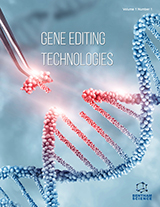Abstract
Industrialization, urbanization and misuse of various natural processes have led to the generation of many pollutants in the environment. These include halogenated nitroaromatic compounds, petroleum hydrocarbons, pesticides, phthalate esters and solvents. Remediation of contaminated sites through conventional methods relies on physicochemical treatments thereby posing considerable technical and economic issues or challenges. A promising technology for the efficient removal of pollutants, bioremediation, involves utilization of capabilities of microorganisms in a costeffective manner. Among microorganisms, actinomycetes have omni-presence in diverse ecological niches and they play a major role as a decomposer community involved in reutilization of substances and degradation of complex polymers as well as in the synthesis of useful bioactive compounds. Therefore, actinomycetes have gained unusual attention as potential candidates for bioremediation. Moreover, prominence of omic studies and nanotechnology has revealed the metabolic regulations and processes that actinomycete utilize to manage the toxicity of pollutants. This manuscript will discuss the research interventions on bioremediation of various pollutants through actinomycetes as remediation agents and their contribution towards environment cleanup.
Keywords: Actinomycetes, Amycolatopsis tucumanensis, Bioactive compounds, Bioremediation approaches, Biotransformation, Diverse niche, Extremophilic Actinobacteria, Environmental pollution, Enzymes, Functional genomics, Green revolution, Hydrocarbons, Heavy metals, Marine Actinobacteria, Nanoremediation, Pollutants, Proteomics, Recalcitrants, Streptomyces rochei, Xenobiotics.






















